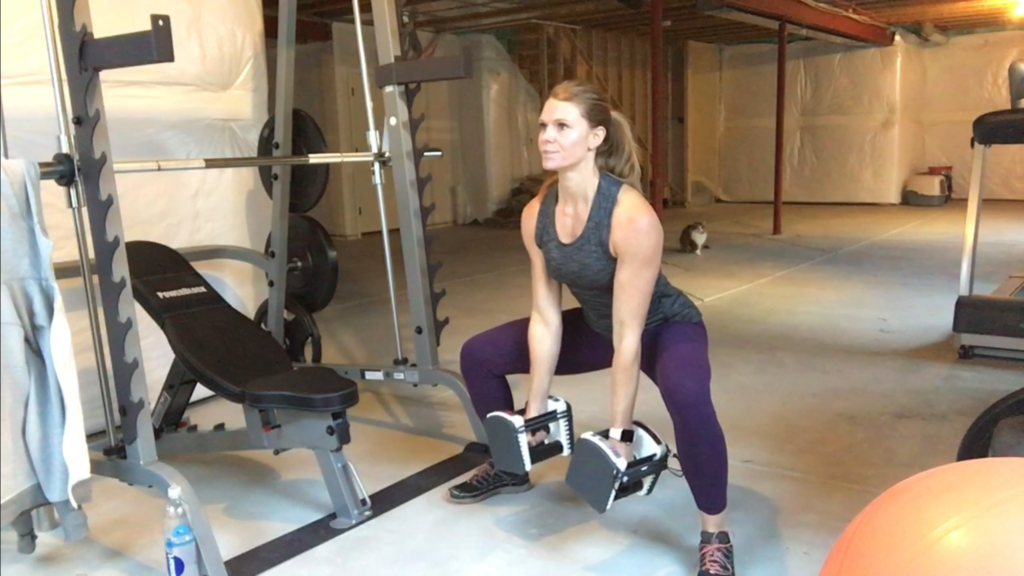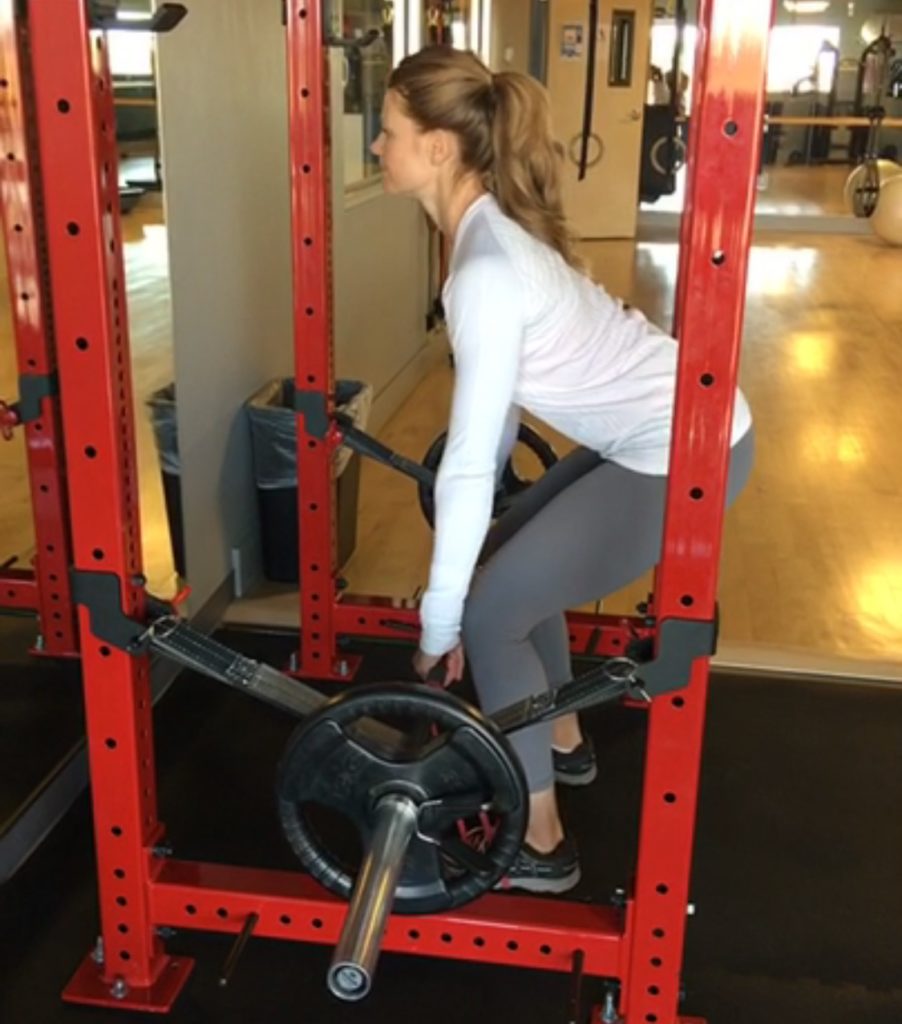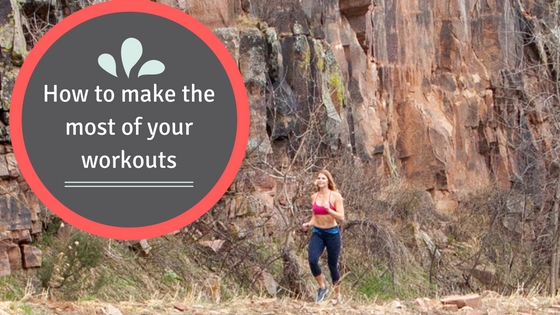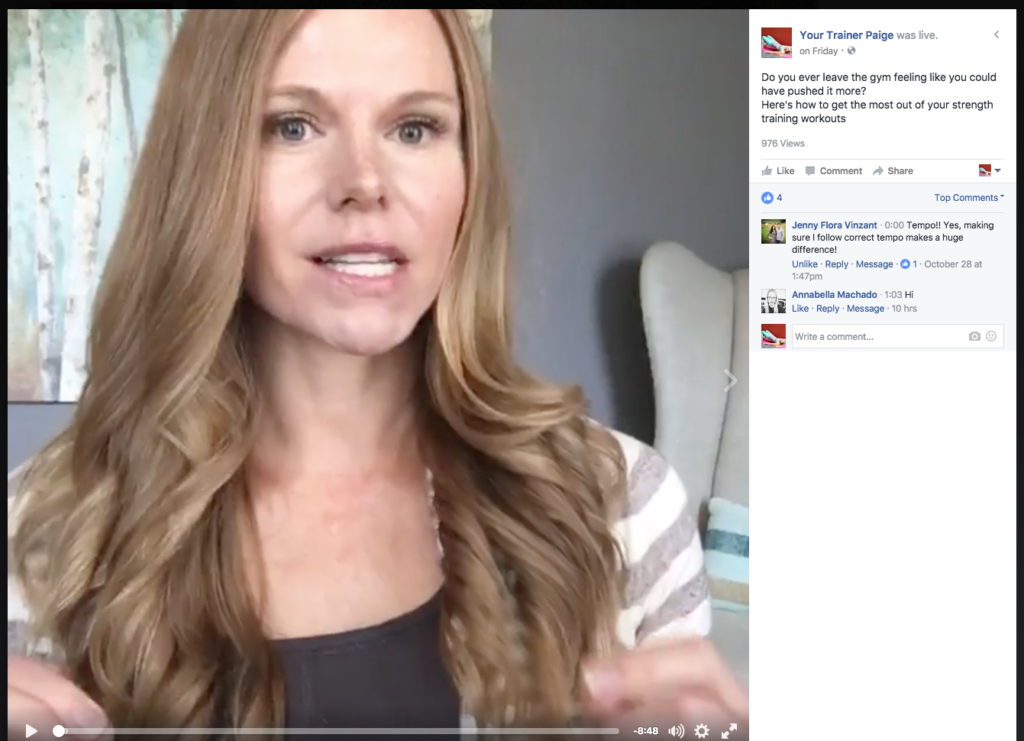Some thoughts and discussions from me.
Hi everyone, and happy Monday! I hope you enjoyed your weekend.
If there ever was a GSD weekend, that could describe mine. While I didn’t make it out to the mountains as much as I would have liked (save for Sunday morning’s run–)

I did Get. Ish. Done. Closet cleaning, laundry, client plans, boot camp work, errands, meal prep, etc. Feels nice!
Now, back at this morning, and today we’re talking How to Make the Most Out of Your Workouts.
How to Make the Most Out of Your Workouts
This post if for you if you have ever just gone through the motions in your workout. Or maybe you’re really giving it your all, but you still leave the gym and you fell like, “Wow, I feel like I could have pushed it just a little bit more.”
Or if you’re not sure if you’re really getting the benefits from your strength training workout, the video below covers it all.
In the video below, I’ll discuss:
- 4 ways to make sure you’re not wasting your time in the gym, and
- how to get the most out of your strength training workouts, and
- some real-life examples
In last Friday’s blog post, I talked about weight selection and how to make sure you’re lifting the appropriate amount, so if you didn’t read that one, this blog post can preclude that. You don’t necessarily need to read that one first, but if you want to head over to that one next, you’ll see I addressed how to make sure you’re lifting enough weight.
(click image to play)
1. Mechanical changes
This is just a fancy way to say what position your body is in.
Quick story — One of my clients was doing the seated hip abductions the other day in her program.
Afterward, she told me, “Hey Paige, I really felt those hip abductions in my hip flexors, and I know we’re supposed to feel them in the glutes meds (the outer hips).”
I told her that her to go ahead and internally rotate her toes about 10-20 degrees to get the feeling in her glutes meds instead of her hip flexors. She made that slight adjustment and felt it immediately in her glutes just by taking her toes and moving them 10-20 degrees inward.
That’s why it’s so important to have those mechanical changes in place.
(Side note: If you’re a client or boot camper of mine and you’re reading this, I’m going to be combing through the hundreds of videos I have to add in additional mechanical cueing to ensure you’re feeling it where you’re supposed to be feeling it!)
Internally rotating your toes is just one example of a mechanical change you can make out of hundreds out there. Another example might be taking the shoulder and moving it back 2 inches, and then boom — you’re feeling it where you’re supposed to feel it.
As I mentioned in Friday’s blog post, feeling it where you’re supposed to feel it — proper execution — is the most important part of our strength training workout. It can make a world of difference!
2. Neuromuscular connection
This is just another way to say “mind/body connection” or “feeling it where you’re supposed to feel it.”

Let’s say you’re doing some SHELCs (supine hip extension leg curls) and you know that those are supposed to be felt in the hamstrings.
While you’re doing the exercise, you’re putting your mind in that muscle — thinking to yourself, “Hamstrings are the main mover, hamstrings are where I should feel the work being done.” That will help you feel the work in the hamstrings instead of the low back or the glutes.
Put your mind in that muscle! Really focus on the body part that’s supposed to be doing the work.
3. Tempo
Tempo is the rate at which we move the implement — whether that’s a dumbbell, our own bodyweight, or a barbell. There are 4 phases to tempo. Many people only focus on 2 of those phases, but it’s important to consider all 4:
- Eccentric
- Bottom
- Concentric
- Top
Let’s say we’re doing a bicep curl. There’s the phase where you bring the weight up (concentric contraction, when the muscle is shortening), the top of the motion where you’re holding but not moving the weight, the phase where you lower the weight (eccentric contraction, when the muscle is lengthening), and the bottom of the motion where your arm is extended.
Each one of those truly matters when it comes to proper execution.
For example, I had an in-person client doing chest press the other day. She was kind of rushing through them and resting at the top of the motion, so I told her to not pause at the top. Once she made that adjustment, she really started feeling it burning in her pecs.
That’s just one example, and depending on the exercises, you can manipulate the tempo to progress it. You can use a 10 lb. dumbbell and, just by changing the tempo, make it feel so much heavier by the end of the exercise!
4. Weight selection

If an exercise feels too easy and you’ve implemented the correct mechanical changes, you’ve established that neuromuscular connection, and you’ve focused on the tempo (a lot of us tend to go too fast!), then you might need to increase the weight.
Those are 4 ways to make sure you really feel it where you’re supposed to feel it and to make sure you’re getting the most out of you strength training workout. In sum…
1. Make sure you have your correct mechanical changes
2. Establish a strong neuromuscular connection
3. Manipulate the different phases of the tempo
4. Weight selection
I hope you found that helpful in terms of getting the most out of your workouts in the gym! If you have any questions at all, or if you’re interested in training — I may have one VIP training spot opening up late next month — please let me know by contacting info@trainerpaige.com.
Tell me: do you ever have trouble making sure you’re working hard enough in the gym?


